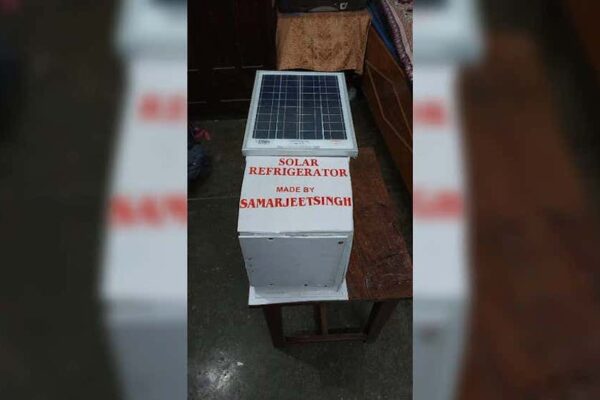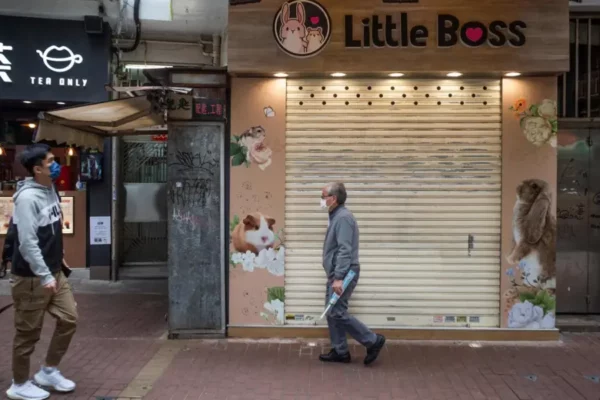Absence of Coronavirus Vaccine Pushes India Towards Health Catastrophe
The novel coronavirus has been ravaging the land for quite some time now and it is likely to stay for some more. While the whole world is struggling in its grip, a cure for coronavirus is nowhere in sight until mid-2021, as the World Health Organization (WHO) has confirmed.
Unearthed from China, the contagious virus has travelled through the world while taking many lives in the process. The USA has a total of over 63,45,100 cases and is the world’s most affected country. Not far behind, India has more than 43,70,400 people infected with COVID-19, irrespective of recovered cases. Combined with the dicey health system of the country and the lethargic attitude of the citizens, the situation could lead the country of 1.3 billion to a major health calamity.
Table of Contents
Coronavirus in India
Initially, the virus wreaked havoc in India’s sprawling and often densely populated cities. It has since stretched to almost every Indian state, spreading through villages and smaller cities, where access to health care is debilitated.
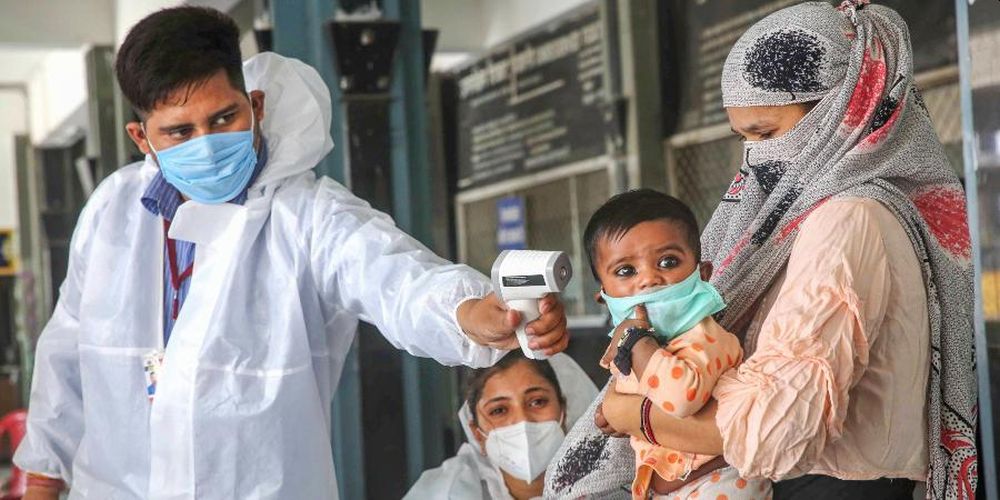
Authorities have been conducting extensive tests for COVID-19 | Image: Financial Express
With a populace of 1.3 billion people, the massive number of infections is not much surprising. The country’s delayed response to the rising infections coerced it to go under strict lockdown in late March, which (for the record) did not yield much. For over two months, the economy remained closed, buying time for the underfunded health care system to prepare for the worst-case scenario.
The first case was reported in Kerala on January 30, which increased to three by February 3; all patients were students returning from Wuhan. In the month of March, 22 fresh cases emerged, including 14 infected members of an Italian tourist group. Thereafter, the cases kept rising, even during the nationwide lockdown – in which the country saw a huge rise in coronavirus cases.
Incompetent Testing System
A small bunch of laboratories was assigned with the task to test people for coronavirus in the first trimester of the year. These labs were insufficiently equipped with not-much advanced testing kits.
Moreover, in the beginning, the labs tested samples only from people with a travel history to 12 countries designated as high-risk or those who have come in contact with anyone testing positive for the coronavirus, or showing symptoms as per the government guidelines. Only after the country saw a rapid increase in the cases, the government ordered the labs to conduct widespread testing campaigns.
While the authorities kept denying any signs of community transmissions, many experts and scientists feared that India has already fallen prey to community spread of COVID-19. The experts believed that community transmission could go undetected without adequate testing. They suggested the government to add more testing centers by including private labs. In mid-March, the government authorized accredited private labs to test for the virus.
In April, the Indian Council of Medical Research (ICMR) revised the testing strategy and allowed testing of people showing symptoms for a week in the hotspot areas of the country, regardless of travel history and local contact with a patient. Towards mid-April, the testing rate was expanded and soon India was testing 1 million people a day for coronavirus.
While the Indian government prides itself on conducting extensive tests across the country, many believe that situation will only worsen. Concerns have also been raised over the accuracy of the tests, as over half were rapid antigen tests, which has a far higher percentage of false negatives. Moreover, where symptomatic cases are easy to detect, asymptomatic cases can go undetected for a long time.
The Lockdown Saga
In March, after the nationwide lockdown was imposed, the United Nations (UN) and the WHO praised India’s response to the pandemic as ‘comprehensive and robust,’ labeling the lockdown restrictions as ‘aggressive but vital’ for containing the spread and building necessary health care infrastructure.
Michael Ryan, chief executive director of the WHO’s Health Emergencies Programme noted that India had a great capacity to deal with the outbreak, owing to its vast experience in eradicating smallpox and polio. Unfortunately, the Indians did not take advantage of the experience and let the situation slip out of the hand.
The country had recorded 606 cases till March 25 with 10 fatalities, which increased to 1,397 infected cases and 35 deaths within the next five days. By mid-April, a total of 10,000 cases was reported as the lockdown was further extended till May 3. The country reported 20,000 confirmed cases on April 22, which rose to 31,700 with over 1,000 deaths on April 29. In May, the nationwide lockdown was extended till May 31, as cases reached over 1,00,000 mark.
Meanwhile, when the lockdown was suddenly imposed, hundreds of thousands of migrant workers were stranded in cities without any way to reach their home villages. Some began long journeys on foot, most headed back to the countryside as they couldn’t afford the rent or food without any work in the cities. This further led to the spread of the virus across the larger portions of the country.
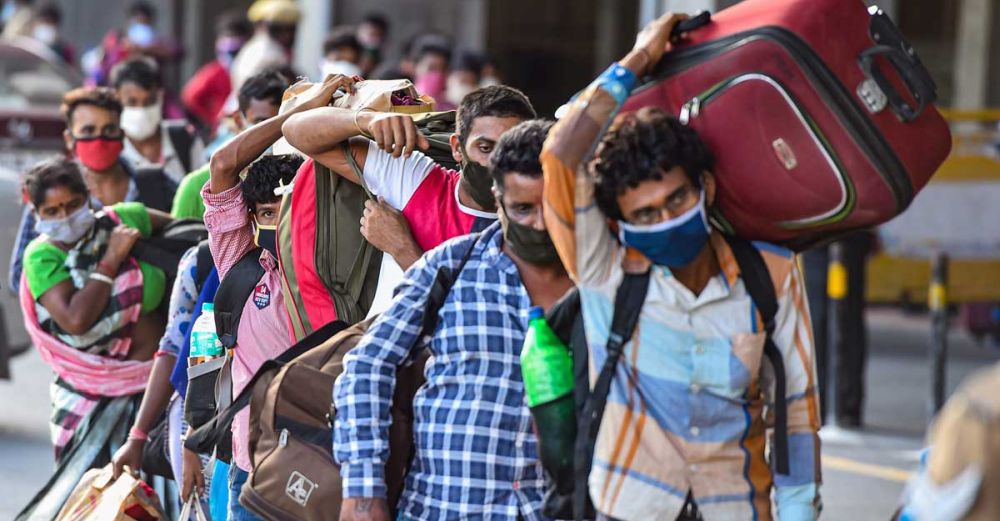
Many stranded people walked back home during lockdown | Image: PTI
On June 8, after 75 days of lockdown, phased reopening began as India recorded over 2,50,000 confirmed cases of coronavirus, with 7,200 deaths, as opposed to the 606 cases and 10 deaths at the beginning of the lockdown. Since then the cases have been rising with ferocity, reaching over 43,70,000 in September.
The steep climb in coronavirus cases also coincided with the country almost completing its reopening after months of lockdown and restrictions, which doctors said they feared was leading to culture and complacency around the virus just as the situation was at its worst. The country took a heavy economic and humanitarian toll amidst the lockdown.
Since the government loosened the lockdown restrictions, the country has seen a major surge in infections as no proactive measures to stop the spread of the virus has been taken, further worsening the situation.
Most Affected Regions
India’s total caseload has made the country the world’s second-largest affected by the novel coronavirus. So far, a large number of cases of the country’s total infections have come from five states – Maharashtra (which has become the fifth worst-hit region in the world), Andhra Pradesh, Tamil Nadu, Karnataka, and Uttar Pradesh.
The worse-hit cities include film city Mumbai, national capital Delhi, Ahmedabad, Pune and Chennai. Densely populated and among the major hubs for economic activities, these regions have seen a massive surge in infection during and post lockdown phases.
Disregard for Precautionary Measures
India is one of the many developing countries that feel the need to prioritize re-openings and accept risks of surging coronavirus infection. With its public health system already strained, experts believe it will reach a breaking point as the Indian government continues to ease restrictions across the country.
With authorities loosening their grip on lockdown restrictions, citizens have started to disregard the precautionary measures. People are avoiding instructions and are not wearing masks in public places. Protocols for social-distancing are also being neglected.
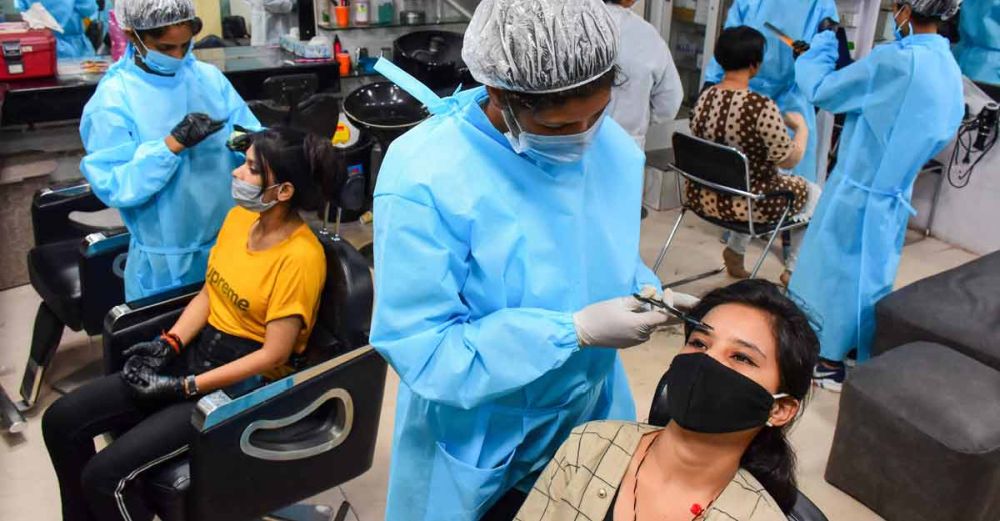
With businesses reopening, the chances of virus spread have increased tenfold | Image: PTI
This disregard for social-distancing procedure and precautionary measures is exacerbating the already worse situation. Given the fragile health care system and the apathetic attitude of people to the coronavirus status in India, it can be said that the worst is yet to come.
Cure: A Distant Dream
At this stage, a cure has become essential to combat the coronavirus outbreak, especially for developing countries with huge populations such as India. If the infection keeps spreading on the current rate in India, the outbreak could become the world’s largest within a few months.
Although many virology labs and scientists are collaborating with pharmaceutical companies to make a cure for the virus, it seems like a distant dream. As the WHO has recently announced that the vaccine for COVID-19 is not likely to develop until mid-2021.
The world’s largest vaccine maker, the Serum Institute of India in Pune, has an agreement to manufacture one billion doses of a coronavirus vaccine that is being developed by scientists at the University of Oxford, UK, and UK pharmaceutical company AstraZeneca if it is approved of use. The vaccine is undergoing phase III clinical trials in Brazil, the UK and the US to test its effectiveness.
Recently, the vaccine trials were halted as AstraZeneca suspected adverse reactions in a participant. If this reaction turns out to be related to the vaccine, all the efforts to find a cure by the company could be derailed.
Drug firm Biological E. headquartered in Hyderabad, India, has also entered into a partnership with Janssen Pharmaceutica based in Beerse, Belgium, to manufacture a vaccine candidate, which is currently undergoing through phase early-stage safety trials.
Indian Immunologicals, Hyderabad, is working with Australia’s Griffith University, Brisbane, to test and manufacture the university’s vaccine. Another Hyderabad-based company Bharat Biotech and Zydus Cadila in Ahmedabad are also working on vaccines that are in phase I and II trials.
With a tremendous capacity to manufacture vaccine(s) on a global scale, many pharmaceutical companies are reaching out to Indian companies to help them manufacture the cure for coronavirus. While many candidates have successfully entered trials, the finals results could take months to reveal the efficiency of these vaccines.
Another thing to cling on to is the hope that herd immunity sets in and the weaker section of the community is protected from the infection. Consequently, all that is left to do is to wait and to follow the precautionary measures to ward off the virus until a cure comes along.
4:50 IST – September 17, 2020
The number of cases in India has reached over 51,18,200 with 83,158 deaths. Meanwhile, there has been an increase of 45 percent in the number of containment zones in the national capital in the last 10 days, while home isolation cases of COVID-19 also jumped by over 50 per cent to reach 16,576 during the period.
According to the World Bank’s chief economist Carmen Reinhart, the global economic recovery from the crisis originated by the coronavirus pandemic may take as much as five years.
